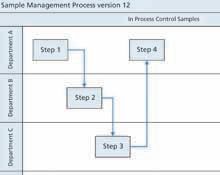Managing Market Expansion’s Effect on Procedures
Siegfried Schmitt, principal consultant, PAREXEL, discusses how to streamline the document management process during market expansion.
Q: Our company has been growing and expanding into new markets in recent years. Therefore, we need to revise the contents of our quality system documentation, such as standard operating procedures (SOPs), to reflect the changed circumstances. However, we find it difficult to change SOPs that require approval by more than one department. Do you have any suggestions for improving this process?
A: Market expansion provides a good opportunity to review your documentation management process, ensuring timely and efficient revisions of documents, such as SOPs. The best approach for changing SOPs that require approval by more than one department is to restrict the contents of SOPs. Process documentation should be limited to only those steps included within the remit and under the control of just one group or department.
The modern approach to a pharmaceutical quality system (PQS) recommends ‘identification of the pharmaceutical quality system processes, as well as their sequences, linkages, and interdependencies. Process maps and flow charts can be useful tools to facilitate depicting pharmaceutical quality system processes in a visual manner’ (1). This guideline has been adopted by the European Union, Japan, and the United States, as well as many other countries. These processes--such as change management, material management, or sample management--often involve several departments or groups in an organization (see Figure 1).
Covering steps 3 and 4 in Figure 1 in one SOP would require the collaboration of departments A and C, plus their respective approvals. While this approach is
CLICK FIGURE TO ENLARGE Figure 1: Sample Management Process

compliant with the applicable regulations, it is discouraged for various reasons, including:
Proposed changes to the process (e.g., timing) can be different among departments and thus can lead to conflicting situations.
There is a potential risk that one department will impose upon another how to perform a task. This can potentially lead to a suboptimal or defective process.
The approval process may differ among the involved parties, leading to frustrating delays and/or complications in achieving timely revisions of the procedures or instructions.
These concerns point to the importance of restricting the contents of SOPs. In the example above, one would therefore separate the current SOP for steps three and four into separate SOPs--and the process-flow approach needn’t or shouldn’t stop here. Preparing the detailed flow for the activities within the SOP before writing any text will drive a logical and sequential descriptive procedure. All too often, this recommendation is not followed, and the sequence is reversed (i.e., the process flow follows the creation of the SOP’s text). This rarely results in a well-written and easy-to-follow SOP. An additional benefit of the process flow-based approach is that it is also aligned with other quality system approaches, such as International Organization for Standardization (ISO) 9001:2015 Quality Management Systems-Requirements (2).
References
1. ICH, Q10 Pharmaceutical Quality System (ICH, April 2009).
2. ISO, 9001:2015 Quality Management Systems-Requirements (ISO, Sept. 15, 2015).
Article DetailsPharmaceutical Technology
Vol. 40, No. 1
Page: 78
Citation:
When referring to this article, please cite it as S.Schmitt, "Managing Market Expansion’s Effect on Procedures," Pharmaceutical Technology 40 (1) 2016.

Entering New Domains for 3D Printing of Drug Products
April 6th 20253D printing of personalized medications is currently possible under existing compounding regulations, offering enhanced process control through automation. But new legislation coming in 2025 will allow 3D printing as part of a distributed manufacturing framework.